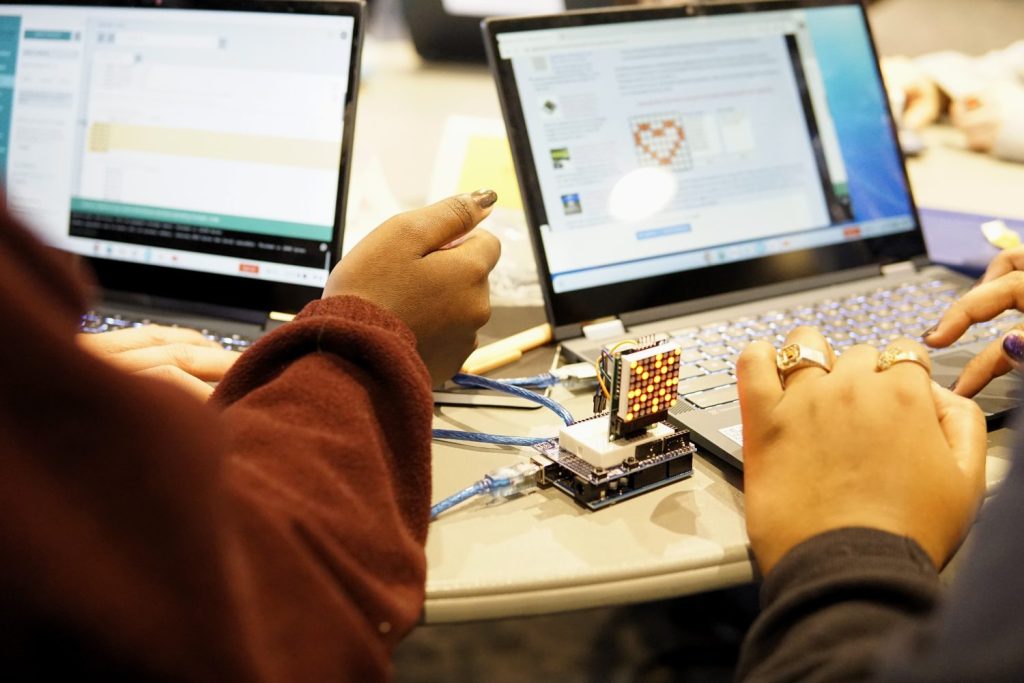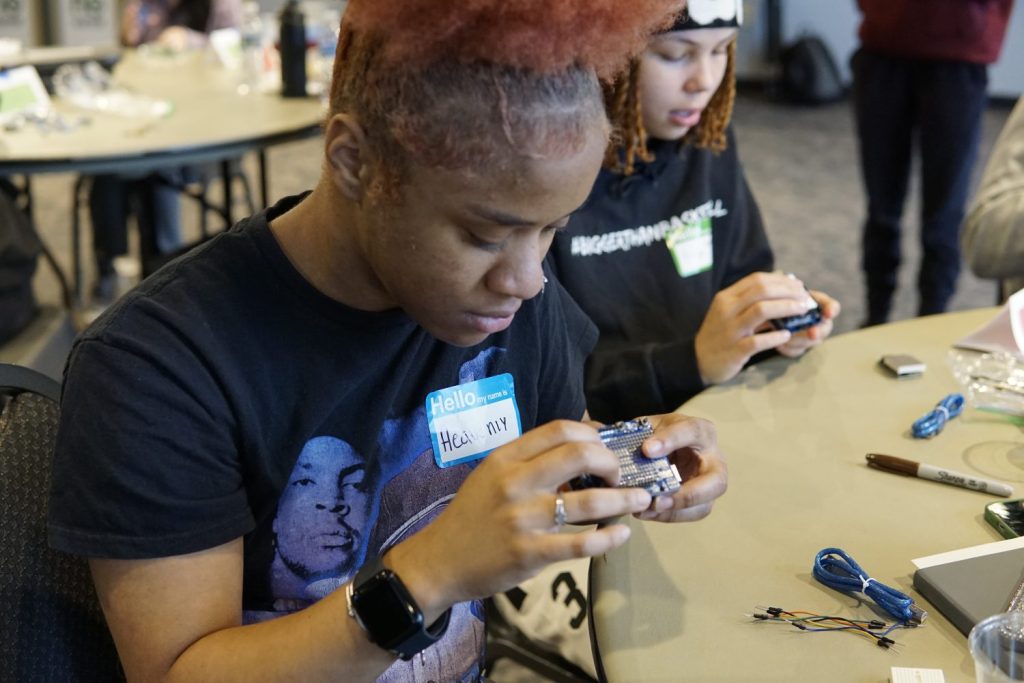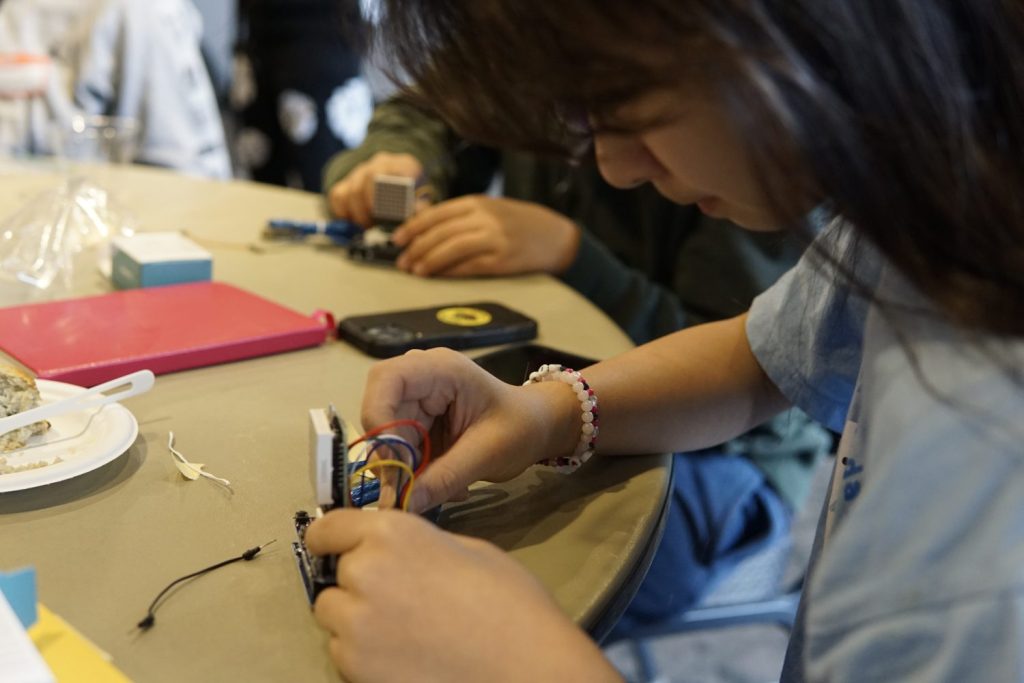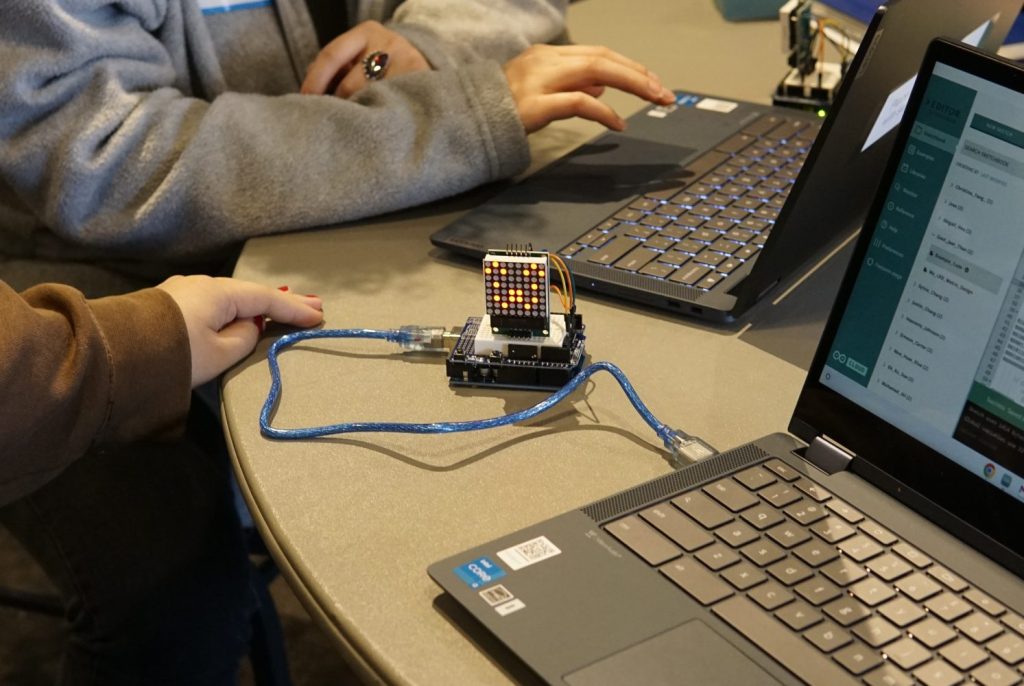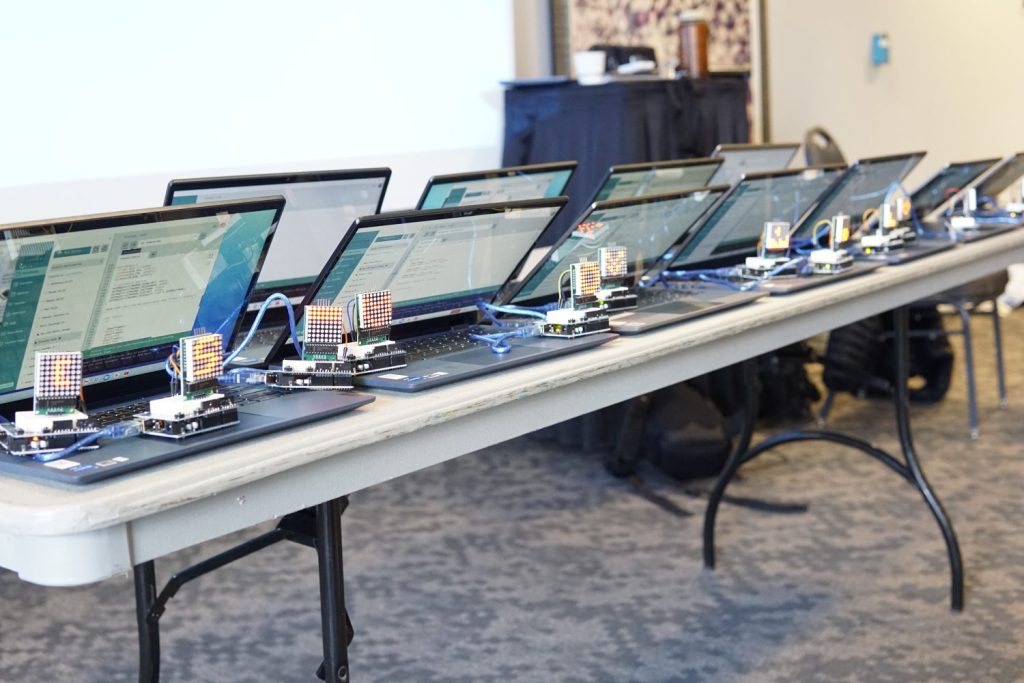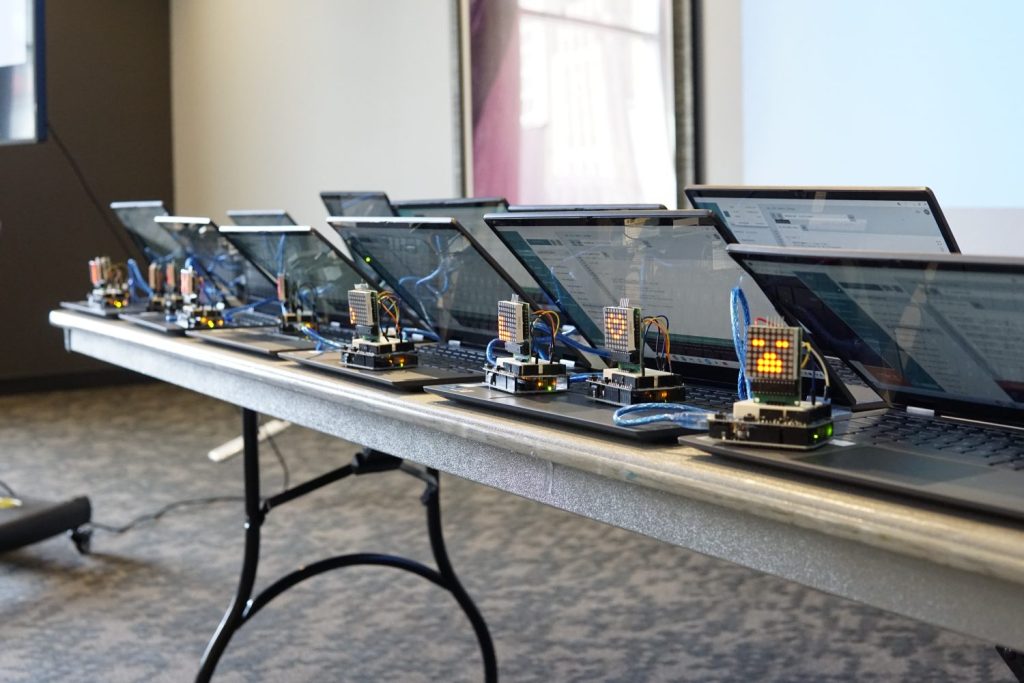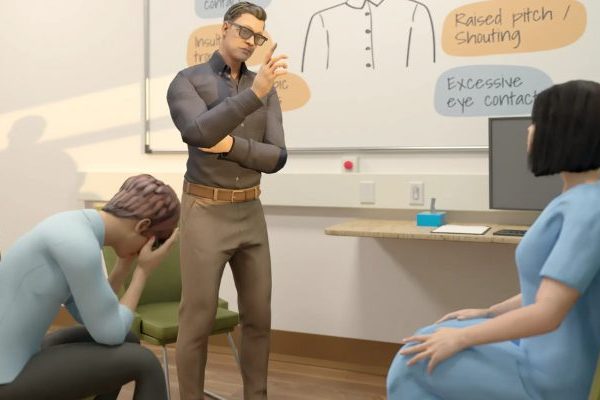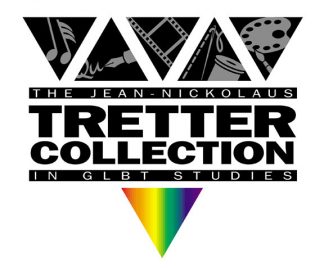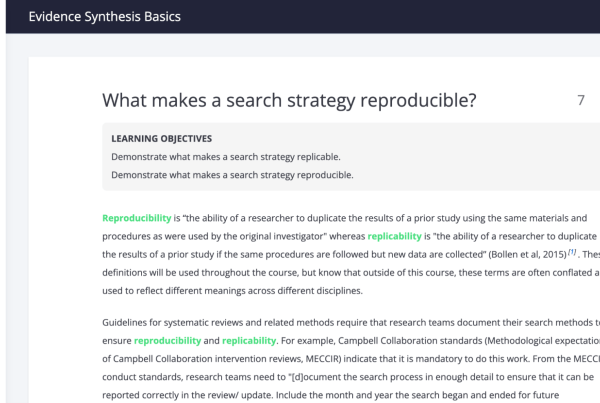Staff from the Makerspace at the Health Sciences Library and from the Toaster Innovation Hub traveled to the Science Museum of Minnesota on March 16, for the first Racial Justice STEAM Collective Youth Summit. The program empowers BIPOC high schoolers to explore the intersections of race and STEAM fields, including engineering, healthcare, and environmental justice, while building community networks and learning from current professionals. Each summit supports 30 participants through panels and guided activities, with youth receiving a stipend and additional materials to further their learning.
“Partnering with the UMN Libraries provides a unique opportunity for participants to gain exposure to STEM, develop new skills, and connect with like-minded peers,” said Charly Vang, the Racial Justice Community Collaborator at the Science Museum of Minnesota. He added that the collaboration between the Summit and the University Libraries “addresses systemic barriers and fosters diversity and inclusion within STEM education, striving to create a more equitable and accessible academic environment for all aspiring students.”
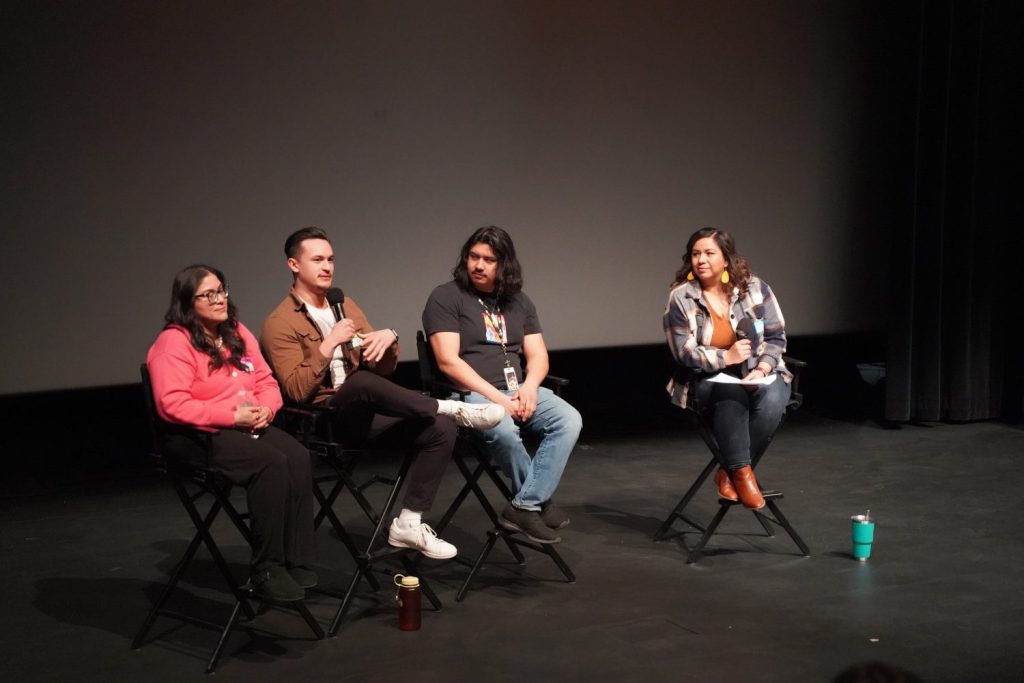
Steven Bleau speaking during the panel session on Saturday, March 16, 2024. (Photo/ Trevor Griffiths)
Makerspace Lab manager Steven Bleau spoke in the morning’s panel discussion, which focused on sharing underrepresented narratives from within the engineering field and identifying resources for BIPOC youth interested in pursuing an engineering career. Steven then led students in an introductory electronics activity. Students learned about circuitry by wiring an 8×8 LED matrix to an Arduino microcontroller, then delved into the code to create their own matrix animations. The activity ended with a project showcase, and students were able to take home Arduino starter kits to continue building and tinkering with electronics. In the second half of the day, students engaged in poetry and improvisation activities relating to environmental justice.
The Libraries’ presence allowed participants to explore an area of engineering that most had never experienced before, with great success. This aligns with a common theme that arose during the panel discussion: the importance of experimentation and risk-taking. “Try things out all the time,” Steven advised students during the panel, “whether it’s difficult or something you enjoy, even if it’s not expected of you.”
- Two students connecting their microcontrollers to a breadboard on Saturday, March 16, 2024. (Photo/ Emerson Ironstone)
- Toaster ambassador Faith helps a student with their project on Saturday, March 16, 2024. (Photo/ Emerson Ironstone)
- A student wires their LED matrix on Saturday, March 16, 2024. (Photo/ Emerson Ironstone)
- A student demonstrating their project on Saturday, March 16, 2024. (Photo/ Emerson Ironstone)
- Final project showcase on Saturday, March 16, 2024. (Photo/ Emerson Ironstone)
- Final project showcase on Saturday, March 16, 2024. (Photo/ Emerson Ironstone)


